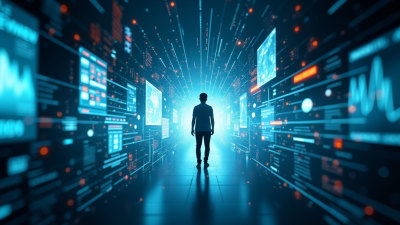Digital libraries have changed how we access, store, and share information in the 21st century. They store millions of documents, books, and multimedia resources that make knowledge available to anyone with an internet connection. The change from physical shelves to digital archives represents one of the most important changes in information management’s history.
Digital libraries provide unmatched advantages. Users can instantly access rare manuscripts while multiple readers worldwide can use them simultaneously. These systems face unique challenges with their strong infrastructure, security, and user experience needs. The progress of digital library systems shows interesting patterns in their modern architecture. We need to break down user availability and data protection. This complete analysis reveals new trends. AI integration and blockchain applications continue to shape what a world of digital libraries might look like.
Evolution of Digital Library Systems
The fascinating experience of digital libraries dates back to 1895. Paul Otlet and Henri La Fontaine imagined the Mundaneum – an ambitious attempt to catalog all world’s knowledge. Their innovative concept became the foundation for modern digital libraries.
From Traditional to Digital: A Historical Viewpoint
Digital libraries emerged from traditional ones with Vannevar Bush’s revolutionary Memex concept in the 1940s. This became the first theoretical framework for future digital libraries. A major breakthrough happened in 1956. The Ford Foundation funded J.C.R. Licklider’s research to improve libraries through technology. This led to his groundbreaking book “Libraries of the Future.”
Key Technological Milestones
Digital libraries advanced through several significant developments:
- 1964: Creation of ERIC (Education Resources Information Center)
- 1980s: Introduction of electronic card catalogs (OPAC)
- 1991: Launch of the first digital library at Carnegie Mellon University
- 1994: NSF/DARPA/NASA Digital Libraries Initiative
- 2000s: Implementation of RFID technology and digital newsstands
Effect on Information Access and Distribution
Digital libraries have changed how people interact with information. Several transformative outcomes have emerged:
- Democratization of Access: Digital libraries bring information to users’ desktops. Knowledge becomes available 24/7 whatever the geographical location
- Enhanced Preservation: Digitization helps protect fragile documents while keeping them available
- Collaborative Innovation: This change promotes unprecedented cooperation among libraries. They create shared resources and unified catalogs
- Resource Optimization: Libraries now use “just in time” acquisition models instead of “just in case” approaches
Digital libraries have grown from simple electronic catalogs into sophisticated knowledge management systems. Cloud-based infrastructure and advanced technologies have created “hybrid libraries.” These institutions maintain both physical and digital collections to serve various user needs.
The transformation continues as libraries welcome new technologies. From CD-ROMs to today’s AI-powered search systems, digital libraries adapt to meet changing user needs. They maintain their core mission to preserve and share knowledge.
Modern Digital Library Architecture
Digital libraries have changed their architecture and deployment methods as technology advances. Modern digital library infrastructure combines cloud computing, advanced data management systems, and innovative technologies.
Cloud-Based Infrastructure
Digital library systems now prefer cloud-based solutions. The Library of Congress shows this priority with its $150 million investment in cloud infrastructure. Cloud computing gives users several key benefits:
- Enhanced Scalability: Systems adjust resources automatically based on what users need
- Improved Accessibility: Users get access to digital resources around the clock
- Cost Optimization: Cloud solutions reduce storage costs by a lot
- Better Resource Management: Large data volumes are handled efficiently
Data Management Systems
Modern digital libraries run on sophisticated data handling systems. These systems create logical collections across multiple storage solutions while you retain control. Our system has:
- Distributed Collections: Global logical collections manage data sets that stay under local site control
- Interoperability Mechanisms: Local data resources integrate into global resources
- Persistent Identifiers: Access stays reliable with location and protocol-independent identifiers
- Automated Management: Data handling and organization follow optimized processes
Integration with Emerging Technologies
Digital libraries now use innovative technologies to become intelligent information centers instead of passive repositories. Artificial Intelligence has changed how we handle cataloging and metadata tagging. Machine Learning algorithms make searches better through natural language processing. Internet of Things (IoT) integration automates inventory management and creates individual-specific experiences.
Cloud-based middleware architecture creates a framework that connects these technologies smoothly. This architecture gives uniform interfaces to distributed components and connects storage, delivery, searching, and browsing of electronic resources. These modern architectural components help handle massive data volumes and give users quick access to information.
User Experience and Accessibility
A user-friendly and available experience is crucial to digital libraries’ success. The way users interact with digital resources and guide through large collections determines how well these systems work.
Interface Design and Navigation
Clear and consistent design are the foundations of a good interface. We aim to create user-friendly navigation systems that help people find information quickly. Here are the core elements that create a better user experience:
- Clear visual hierarchy and layout
- Consistent layout across all pages
- User-friendly search functionality
- Well-laid-out metadata display
- Responsive feedback mechanisms
Mobile Access and Cross-Platform Compatibility
Users today access digital libraries on many different devices. Our mobile-first design makes resources available around the clock on all platforms. The technologies we use adjust content display based on screen size and device capabilities. This matters even more now since most users prefer smartphones to access library resources.
Users can switch between devices smoothly with our cross-platform compatibility. The experience stays consistent and user-friendly whether you start research on your office desktop or continue on your tablet at home.
Accessibility Features for Diverse Users
We put inclusive design first to help users with different abilities and needs. Our complete accessibility strategy has:
- Screen reader compatibility for visually impaired users
- Keyboard navigation options for motor-impaired individuals
- Adjustable text sizes and contrast settings
- Multi-language support
- Voice-enabled search capabilities
Our implementation of Web Content Accessibility Guidelines (WCAG) has created digital spaces that work for everyone’s needs. Features we designed for accessibility often help all users, which creates a more inclusive and user-friendly environment.
Assistive technologies have reshaped our approach to digital library design. Text-to-speech functions and customizable interfaces make our digital libraries available to everyone. Universal design keeps knowledge available whatever your physical capabilities or technical skills.
Security and Privacy Considerations
Security is a vital concern in our digital world, especially when we see more cyber threats targeting online digital libraries. Ransomware attacks on major institutions have shown why strong security measures matter so much.
Data Protection Protocols
Our digital libraries have detailed data protection measures. The security framework has:
- Encryption at Rest and in Transit: All user data and digital assets are encrypted
- Regular Security Audits: Systematic evaluation of vulnerabilities
- Automated Backup Systems: Multiple secure locations for data redundancy
- Incident Response Plans: Quick reaction protocols for security breaches
- Access Control Systems: Granular permissions management
User Authentication Methods
Strong authentication is the foundation of secure digital libraries. Our layered approach uses several sophisticated methods:
- Multi-Factor Authentication (MFA)
- Smartphone-generated codes
- Biometric verification
- Hardware security keys
We’ve added advanced biometric authentication technologies that include facial recognition, fingerprint scanning, and voice biometrics. These methods give better security without sacrificing convenience. Our certificate-based authentication system works like electronic passports to ensure secure access.
Privacy Compliance and Regulations
We follow privacy regulations strictly, including FERPA and state-specific library confidentiality statutes. Our steadfast dedication goes beyond just following rules – we’ve built Privacy by Design principles into our systems. Privacy protection sits at the heart of our digital library architecture instead of being an afterthought.
Our experience shows that privacy helps ensure free access to information. We collect only essential data and use strong data retention policies. The systems automatically remove unnecessary personal data and keep only what’s needed to operate.
Clear protocols guide how we handle government and law enforcement requests for user data. We require proper court orders and follow strict verification steps. Federated identity systems and claims-based access control have made identity assurance better while protecting user privacy.
Trust frameworks are the foundations of our privacy protection strategy. These frameworks bind all members of our digital library community legally to specific operational policies. This creates consistent privacy standards across our network.
Future Trends and Innovations
Digital libraries are changing fast as they adopt state-of-the-art technologies that will change how people use information. Our research shows that more than 60% of libraries now evaluate or plan to use these groundbreaking solutions.
AI and Machine Learning Integration
AI is reshaping digital libraries in ways we never imagined. Our machine learning algorithms have created systems that offer:
- Individual-specific content recommendations based on user behavior
- Automated metadata generation and cataloging
- Natural language processing to improve search capabilities
- Smart content preservation and digitization
- Predictive analytics to develop collections
AI-powered tools help librarians spend more time on strategic work instead of routine tasks. About 42% of library professionals think AI will help them serve their communities better.
Blockchain in Digital Libraries
We are leading the way by adding blockchain technology to create “smart libraries.” This new approach changes how digital resources work and get shared. Our blockchain system creates a decentralized framework that provides:
- Better metadata systems with distributed verification
- Digital first-sale rights protection
- Peer-to-peer resource sharing
- Community-based collections management
- Clear usage tracking
Our LibChain system lets patrons lend directly to other patrons without returning items to the library. This makes resources more available while keeping everything secure and accountable.
Extended Reality (XR) Applications
XR technology shows great promise for digital libraries. The OEXR Library initiative creates immersive educational experiences that go beyond traditional learning. We use virtual, augmented, and mixed reality technologies in our work.
XR works especially well with specialized collections. We built virtual anatomy libraries with detailed 3D models, and our augmented reality apps add interactive digital content to physical books.
XR technology makes content more available to different types of users. Our Studio X program offers tools like Meta Quest 2 VR headsets and Microsoft HoloLens 2, so all patrons can enjoy immersive learning.
These technological innovations stem from understanding what they can do. AI processes huge amounts of data to create individual-specific experiences. Blockchain ensures clear and secure resource sharing. XR builds engaging learning spaces that were impossible before.
These technologies do more than advance our capabilities – they change how we think about digital libraries. We keep developing and improving these systems while focusing on our main goal: making knowledge available to everyone and preserving it for future generations.
Conclusion
Digital libraries are clear evidence of technological progress that has reshaped how we preserve and share knowledge between generations. Our experience with their progress shows remarkable achievements. Simple electronic catalogs have transformed into sophisticated AI-powered systems serving millions of users worldwide.
Several significant aspects define modern digital libraries:
- Cloud infrastructure provides unprecedented scalability and accessibility
- User-focused design brings information to people of all backgrounds
- Strong security protocols protect valuable digital assets
- Privacy measures ensure user confidentiality
- AI, blockchain, and XR technologies shape future possibilities
Digital libraries will grow beyond simple information repositories. These dynamic knowledge hubs become stronger through technological advancement and preserve core principles of accessibility. Security challenges exist, but innovative solutions emerge each day to strengthen these digital fortresses.
We work to advance digital libraries with a greater purpose – to democratize knowledge access and protect intellectual heritage for future generations. These systems showcase more than technological achievement. They demonstrate our steadfast dedication to universal education and information sharing.


